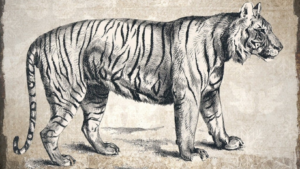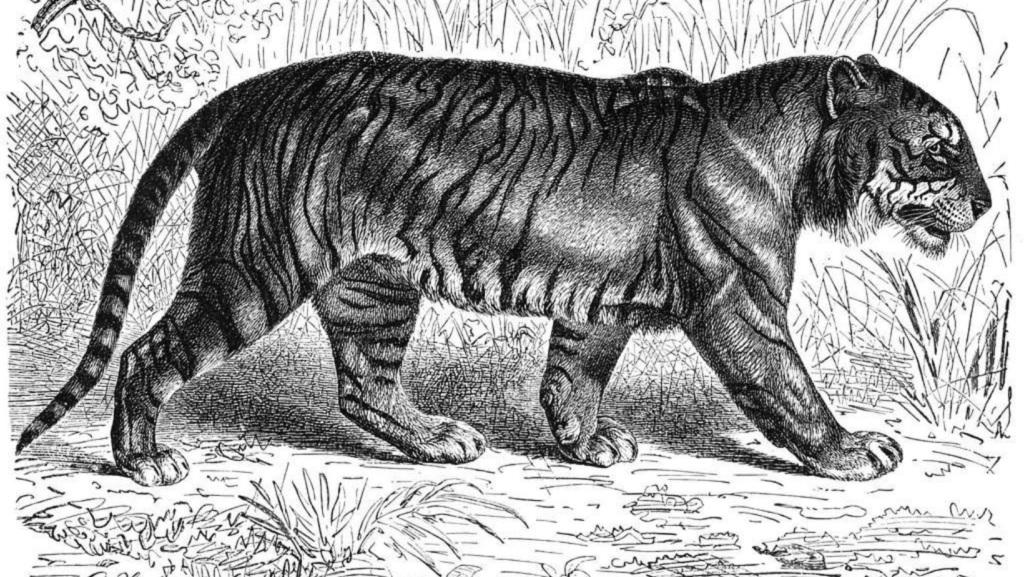Unleashing your inner artist is a journey of discovery, and what better way to explore than by learning to draw one of the most majestic creatures, the tiger. This article will guide you through the steps, tips, and techniques to bring this fascinating beast to life on paper and understand why these lovely felines have had an impact in the local economy.
Whether you’re a seasoned artist or a beginner, there’s something for everyone. We’ll delve into the intricacies of capturing the tiger’s fierce elegance, from the unique stripe patterns to the intensity of its gaze. But first make sure you’ve maximize your space to start creating.
So grab your sketchbook and pencils. It’s time to embark on an artistic adventure that’ll not only enhance your drawing skills but also deepen your appreciation for these magnificent creatures.
Drawing:xms2zhd83gq= Tiger

Tigers frequently appear in art, evoking a range of emotions. Their role shows how art, like tigers themselves, bridges cultural and historical divides.
Tigers find frequent representation in historical artwork space. For instance, in ancient Chinese art, tigers often symbolized bravery and power. Emperors used tiger-designs on their armor to exude an impression of authority and invincibility. Fast forward to the 19th century, artists in Europe often depicted tigers to express exoticism and wild beauty. Artist Eugène Delacroix’s painting ‘Tiger Playing with a Turtle’(1862) epitomizes this trend.
Cultural Representations Across the World
Globally, tigers flourish as cultural icons. In Indian art, the tiger often appears as the mount of Goddess Durga, signifying her raw power and fierceness. Bali’s traditional art and Japan’s folklore art each feature tigers that encapsulate native beliefs. Korean artist Kim Hong-do’s ‘Tiger Under a Pine Tree’(1775) encapsulates Korea’s age-old tiger reverence, demonstrating tigers’ pervasiveness in visual narratives worldwide.
Techniques for Drawing Tigers

When it comes to drawing tigers, artists utilize a stretch of techniques, mediums, and tools. Let’s explore two important aspects: capturing the essence of a tiger and making the right choice of medium and tools.
An artist truly masters the craft of drawing a tiger when he embraces its true essence. The tiger, a symbol of fearlessness and power, possesses distinctive features that give it an unmistakable identity. Predominantly, the piercing gaze, the bold stripe pattern, and the muscular structure form the crux of its essence.
For instance, to manifest the tiger’s intense gaze, artists often focus on detailing the eyes. The key lies in getting the shape, color gradation, and light reflection right, setting the tiger’s eyes alight with life. Similarly, the unique stripe pattern, unlike those of other big cats, demands careful attention. The pattern varies not only between individual tigers but also between various subspecies.
Choice of Medium and Tools

The choice of medium and tools greatly impacts the aesthetics of a tiger drawing. A few popular mediums include graphite pencils, charcoal, colored pencils, and watercolor, each lending a distinct aesthetic to the artwork. The learner’s level of expertise, personal preference, and the desired final look play critical roles in this choice.
Graphite pencils, for example, are an excellent choice for beginners due to their wide availability and ease of use. On the other hand, colored pencils can bring the tiger to life with a vibrant burst of color. Watercolor, for those with a more experienced hand, provides a unique fluidity and depth to the tiger’s representation. The choice of paper, with factors such as texture, thickness, and color, further enhances or reduces the effectiveness of the chosen medium.
Remember, although these mediums have their particular advantages, the magic really happens when an artist experiments and discovers his unique style. Like anything related to art, there aren’t any strict rules: discovering the right medium and tool is an exhilarating journey of trial and error.

